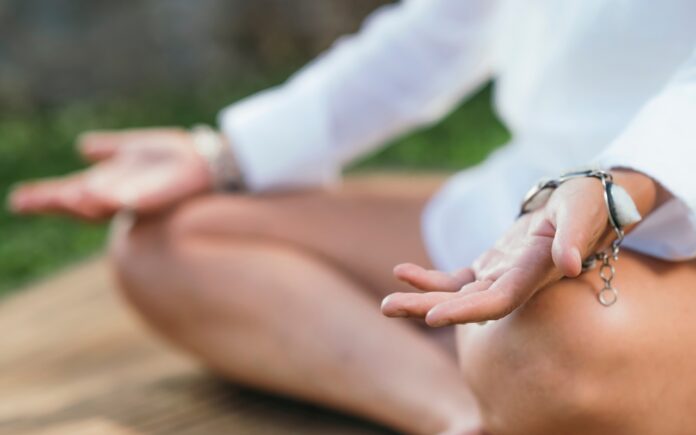In today's fast-paced world, mindfulness has gained significant traction as a tool for improving mental health and overall well-being. Mindfulness, at its core, involves being fully present and engaged at the moment, aware of your thoughts and feelings without becoming overwhelmed. This comprehensive guide delves into the various facets of mindfulness, illustrating how integrating it into your life can bring profound benefits.
The hustle and bustle of modern life often leave little room for self-care and reflection. However, mindfulness offers a reprieve from this relentless pace, inviting you to pause and cultivate a deeper sense of presence and awareness. By incorporating mindfulness into your routine, you can better manage stress, boost your mental health, and enhance your physical well-being.
Understanding Mindfulness
Mindfulness is much more than just meditation. It is a state of active, open attention to the present. This concept, deeply rooted in Buddhist traditions, has been adapted and embraced globally in various forms. The practice encourages you to observe your thoughts and emotions from a distance without labeling them as good or bad.
At its essence, mindfulness teaches you to live in the moment and awaken to the experience of life. By doing so, you can break free from the cycle of autopilot living, where days blur into weeks and weeks into months, with little engagement or awareness.
Benefits of Mindfulness
Emotional Regulation
Mindfulness is particularly effective in emotional regulation, helping to reduce the intensity and impact of negative emotions such as anger, anxiety, and depression. Mindfulness promotes more positive emotional outcomes by fostering a balanced approach to handling emotional challenges. This balanced state allows you to navigate life's ups and downs with greater ease and stability.
Improved Physical Health
The physical health benefits of mindfulness are well-documented. Regular practice can lower blood pressure, reduced chronic pain, and an enhanced immune system. By reducing stress and promoting relaxation, mindfulness contributes to a healthier and more resilient body. The practice encourages a holistic approach to health, recognizing the intricate link between mind and body.
Enhanced Mental Health
Mindfulness is particularly beneficial for mental health. It can alleviate symptoms of depression and anxiety, improve mood, and increase overall emotional well-being. Engaging in mindful activities can create a mental space that allows you to process thoughts and feelings more effectively, leading to a more peaceful and balanced mind.
Greater Focus and Cognitive Functions
Mindfulness can enhance cognitive functions such as concentration, memory, and problem-solving skills. By training the mind to focus on the present moment, mindfulness helps reduce distractions and improve your ability to concentrate on tasks. This increased focus can lead to better performance in various aspects of life, from work to personal relationships.
Enhanced Relationships
Mindfulness is not just about cultivating greater awareness and compassion for yourself—it can also profoundly impact your relationships with others. Bringing a mindful presence to your interactions can create conditions for deeper connections and understanding. This leads to more meaningful and authentic communication, fostering stronger and more supportive relationships.
Practicing Mindfulness in Daily Life
Mindfulness Beyond Meditation
One significant advantage of mindfulness is that it doesn’t have to involve sitting still for long periods. Mindfulness can be practiced in various ways, many of which involve movement and activity. For instance, mindful walking consists of paying attention to the sensation of your feet touching the ground, the rhythm of your breath, and the sights, sounds, and smells around you. Yoga and tai chi also incorporate mindfulness through deliberate movement and focused breathing.
Start Small
Incorporating mindfulness into your daily routine doesn’t require drastic changes. Start with small steps, like setting aside a few minutes daily for a mindfulness practice. This could be as simple as taking a few deep breaths in the morning or dedicating 10-15 minutes to a guided meditation. The key is consistency – making mindfulness a regular part of your routine, even if it’s just for a few minutes each day.
Bring Mindfulness to Daily Activities
Mindfulness can be integrated into virtually any activity. Whether eating a meal, showering, or commuting to work, bring a sense of presence and awareness to the experience. Notice the sensations in your body, the thoughts and emotions that arise, and the details of your surroundings. This practice helps anchor your mind in the present moment, reducing stress and increasing enjoyment of everyday activities.
Mindful Communication
Practicing mindful communication involves giving others your full attention when interacting with them. Listen actively, without judgment or interruption, and notice how it feels to be fully present in the conversation. This approach fosters a sense of safety and trust, leading to more meaningful and effective communication.
Managing Stress and Difficult Emotions
Mindfulness can be a powerful tool for managing stress and difficult emotions. When feeling overwhelmed or upset, take a few deep breaths and bring your attention to the present moment. Notice the sensations in your body and the thoughts and emotions that arise, without trying to change or suppress them. Observing your experience with curiosity and compassion allows you to find greater calm and clarity in challenging situations.
Micro-Practices for Busy Schedules
One of the biggest obstacles to practicing mindfulness is the belief that you don’t have enough time. However, some of the most potent moments of mindfulness can happen during your busy daily life. Incorporate “micro-practices” – brief moments of awareness and presence that you can sprinkle throughout your day. For example, take a few deep breaths while waiting in line at the grocery store, or pause to notice the sensation of your feet on the ground as you walk to your next meeting.
Structured Mindfulness Exercises
For more structured mindfulness exercises, such as body scan or sitting meditation, set aside a time when you can be in a quiet place without distractions. Practicing mindfulness daily for a substantial period, such as six months, can lead to long-term benefits and make the practice feel more effortless over time.
Enhancing Workouts with Mindfulness
Benefits of Mindful Exercise
Integrating mindfulness into your workout routine can transform the experience, improving focus, performance, and satisfaction. Mindful exercise involves being fully present and engaged in the activity, aware of your body’s movements, your breath, and the sensations you feel. This approach can enhance the mind-body connection, leading to better physical performance and a more profound sense of enjoyment.
Techniques for Mindful Workouts
Setting Intention
Before beginning your workout, take a moment to set an intention. It could be focusing on your breath, staying present, or simply being grateful for the ability to move your body. This intention can guide your practice and help bring your mind back when it wanders.
Focusing on Breath
Breathing is a powerful tool for anchoring your attention. Pay attention to your breath’s rhythm, depth, and sensations in your body. During aerobic exercises, synchronize your movements with your breath to maintain focus and rhythm.
Engaging Your Senses
Use your senses to stay present. Notice the feel of your feet hitting the ground, the sound of your breath, or the sights around you if you're outdoors. Engaging your senses helps keep your mind from wandering and enhances the workout experience.
Practicing Body Awareness
Pay attention to your body’s movements and how different muscles feel during your workout. Notice any areas of tension or discomfort, and adjust your movements accordingly. This not only helps with mindfulness but can also prevent injury.
Ending with Gratitude
After your workout, take a moment to cool down and reflect on your practice. Acknowledge your effort and be grateful for your body’s strength and capability. This practice of gratitude can enhance feelings of satisfaction and accomplishment.
Mindful Exercises to Try
Mindful Walking or Running
Focus on the sensation of your feet touching the ground, the rhythm of your breath, and the sights and sounds around you. This practice turns your workout into a moving meditation, helping to reduce stress and increase enjoyment.
Yoga
Yoga naturally incorporates mindfulness through focused breathing and movement. Stay present in each pose, observing your body’s sensations. This practice enhances the mind-body connection and provides both physical and mental benefits.
Body Scan Meditation
After your workout, lie down and mentally scan your body from head to toe, noticing any sensations, tension, or areas of relaxation. This practice helps you tune into your body and fosters a deeper sense of awareness and relaxation.
Mindfulness in Relationships
One of the most profound impacts of mindfulness can be seen in personal relationships. When you bring a mindful presence to your interactions with loved ones, coworkers, and even strangers, you create the conditions for deeper connection and understanding.
Active Listening
One way to practice mindfulness in relationships is through active listening. Give the other person your full attention without getting distracted by your own thoughts or judgments. Notice the tone of their voice, the expressions on their face, and the emotions behind their words. By fully showing up for the other person, you can create a sense of safety and trust that allows for more authentic and meaningful communication.
Navigating Conflicts
Mindfulness can also help you navigate conflicts and disagreements with more excellent skill and compassion. When feeling triggered or defensive, pause and observe your reactions with curiosity and non-judgment. Notice the sensations in your body and the thoughts and emotions that arise without getting caught up in them. This space of awareness allows you to respond to the situation with greater clarity and care rather than reacting impulsively or saying something you might regret.
Final Thoughts
Incorporating mindfulness into your daily routine is a powerful way to prioritize your well-being and find greater peace and clarity. Whether you struggle with stress or anxiety or simply feel overwhelmed by the demands of daily life, mindfulness offers a simple yet effective way to cultivate greater presence, emotional balance, and overall well-being.
Start small, with just a few minutes of mindfulness practice daily, and gradually build from there. Remember, the key is consistency and compassion – be patient with yourself as you embark on this journey. By making mindfulness a regular part of your life, you can unlock its many benefits and transform your experience of the world.
For additional resources and information on mindfulness practices, you may find these links useful:
- Deliberate Directions – How to Incorporate Mindfulness into Your Mental Health Routine
- Mayo Clinic – Mindfulness Exercises
- Calm – Meditation While Working Out
- Mavyn – Boost Workouts with Mindfulness Techniques
Begin your mindfulness journey today and open up to a world of greater presence, well-being, and fulfillment.













![Bowflex Max Total: 2024 Fitness Workout Exercise Machine [Review] Bowflex Max Total: 2020 Equipment Review For Complete Upper and Lower Body Workout](https://www.advancedliving.com/wp-content/uploads/2019/12/Bowflex-Max-Total-218x150.jpg)


